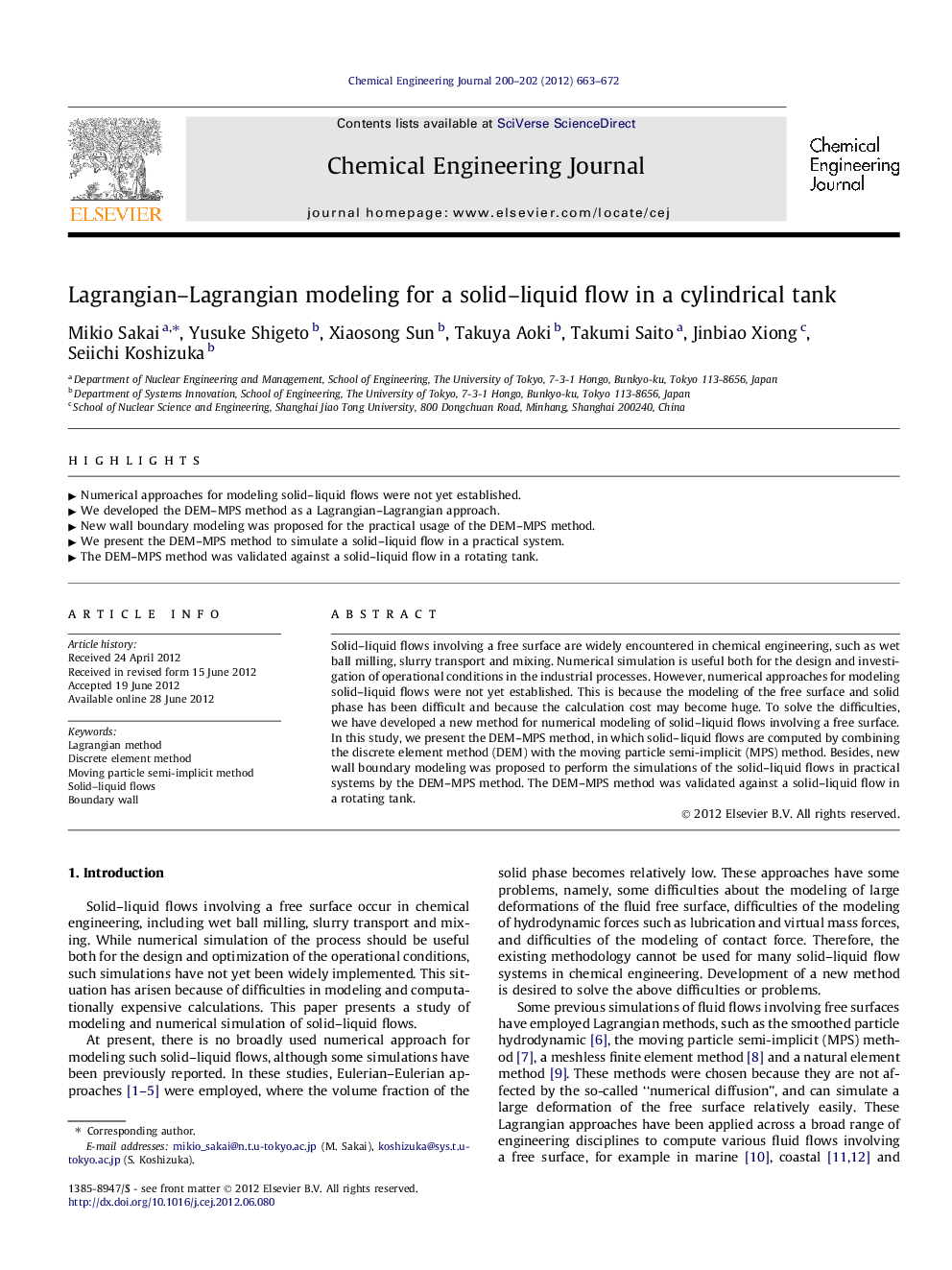| Article ID | Journal | Published Year | Pages | File Type |
|---|---|---|---|---|
| 149596 | Chemical Engineering Journal | 2012 | 10 Pages |
Solid–liquid flows involving a free surface are widely encountered in chemical engineering, such as wet ball milling, slurry transport and mixing. Numerical simulation is useful both for the design and investigation of operational conditions in the industrial processes. However, numerical approaches for modeling solid–liquid flows were not yet established. This is because the modeling of the free surface and solid phase has been difficult and because the calculation cost may become huge. To solve the difficulties, we have developed a new method for numerical modeling of solid–liquid flows involving a free surface. In this study, we present the DEM–MPS method, in which solid–liquid flows are computed by combining the discrete element method (DEM) with the moving particle semi-implicit (MPS) method. Besides, new wall boundary modeling was proposed to perform the simulations of the solid–liquid flows in practical systems by the DEM–MPS method. The DEM–MPS method was validated against a solid–liquid flow in a rotating tank.
► Numerical approaches for modeling solid–liquid flows were not yet established. ► We developed the DEM–MPS method as a Lagrangian–Lagrangian approach. ► New wall boundary modeling was proposed for the practical usage of the DEM–MPS method. ► We present the DEM–MPS method to simulate a solid–liquid flow in a practical system. ► The DEM–MPS method was validated against a solid–liquid flow in a rotating tank.
